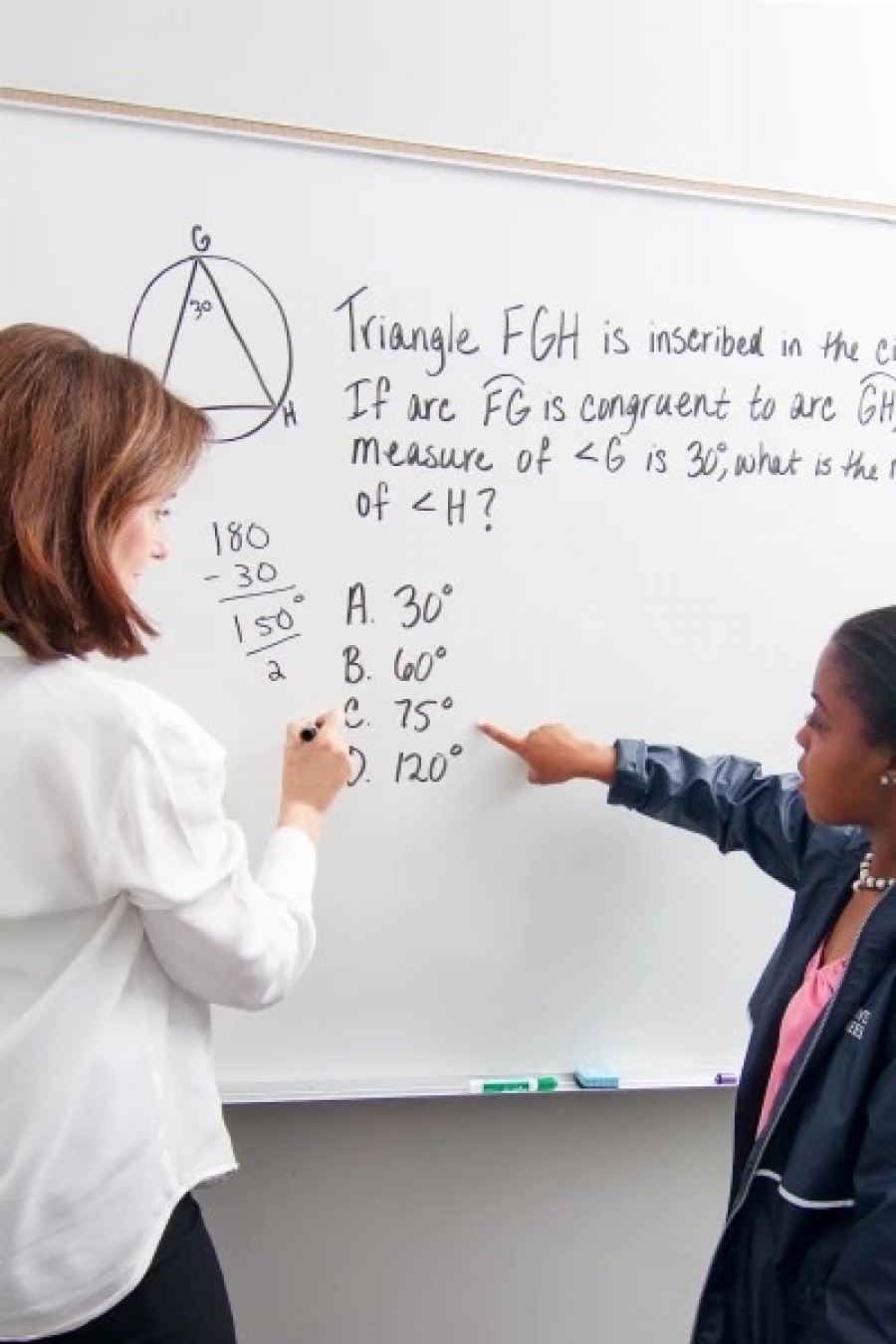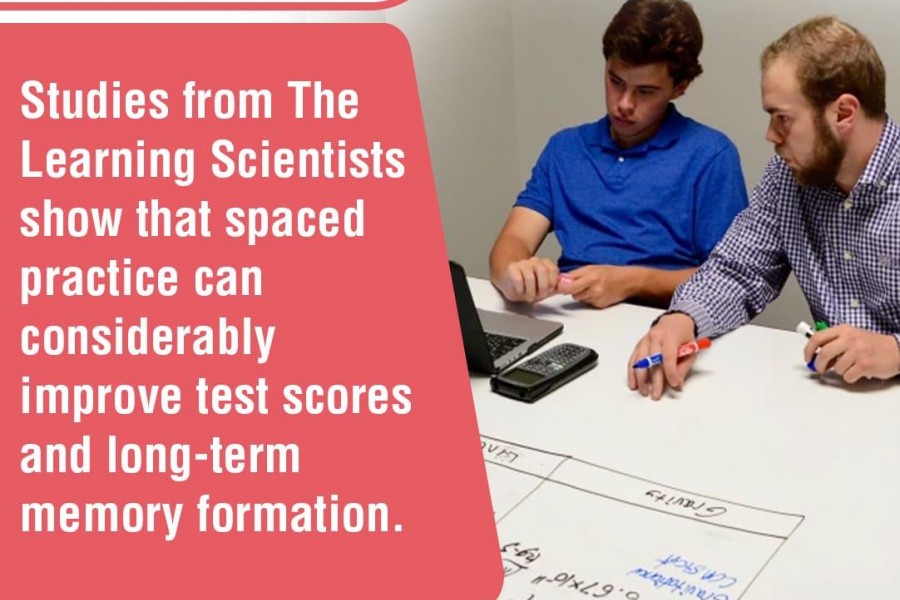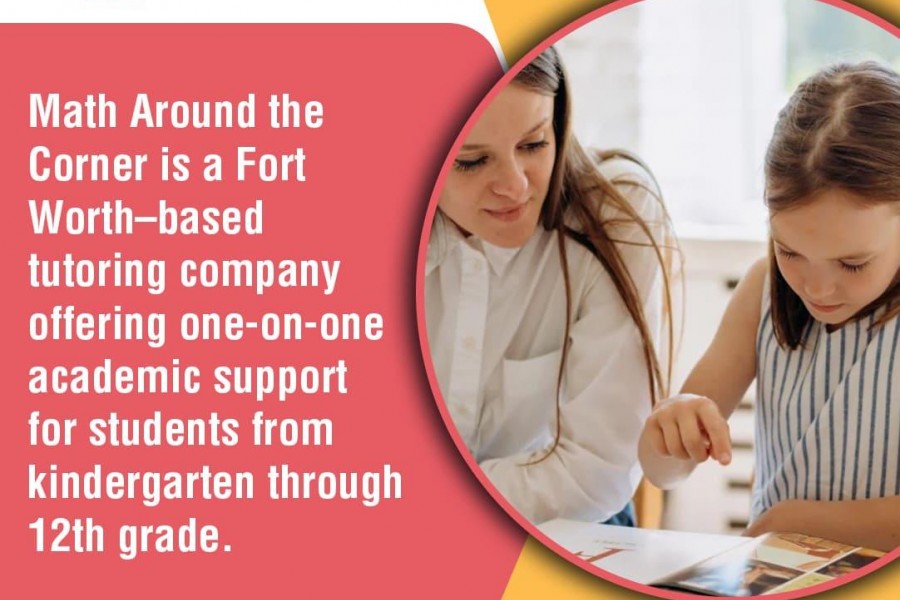How to Study Better? Top Study Habits for Math and Science Success

In our tutoring sessions at Math Around the Corner, we’ve seen time and again that effort beats talent. Natural ability may give students a head start, but it’s strong study habits that carry them through the challenges of math and science. When students learn how to study better, they begin to see real progress—often in areas they once found too hard to attempt.
STEM subjects—like algebra, physics, chemistry, and geometry—can be especially difficult because they build layer by layer. A student who misses one concept in the early stages may struggle later on, even if they’re working hard. These subjects also demand a type of abstract reasoning that isn’t always intuitive. In many cases, students simply haven’t been taught how to organize their thinking, approach a problem logically, or revisit key material over time.
That’s where STEM learning strategies come in. We teach students not just the content but the habits that support it—daily practice, spaced review, and active problem-solving techniques. These habits create long-term gains that aren’t easily undone by a missed assignment or a tough unit. When students begin applying the right strategies consistently, they don’t just catch up—they start to lead.
Good study habits don’t form overnight, but they are learnable, and they work. In math and science, they often make the difference between falling behind and building momentum.
Key Takeaways
1. Consistent daily practice builds long-term success.
A short, focused routine—15 to 30 minutes per day—improves fluency in math and science far more than last-minute crammin
2. Active recall and spaced repetition strengthen memory.
These proven STEM learning strategies help students retain information longer and reduce stress before exams.
3. Deep understanding beats memorization.
Teaching students how to study better means helping them grasp concepts, not just memorize formulas.
4. Small wins build confidence and momentum.
Celebrating early successes is one of the most effective study tips for math and science learners alike.
5. One-on-one tutoring reinforces habits that last.
Through customized sessions and targeted science tutoring help, students build better study systems and academic independence.

Habit 1: Build a Consistent Daily Practice Routine
One of the most effective STEM learning strategies we teach at Math Around the Corner is simple: practice daily. Math and science aren't subjects you can cram for. They require consistent, repeated exposure to ideas and problem types. Without that routine, students lose fluency and fall behind.
We recommend 15 to 30 minutes per day, five to six days a week, focused on targeted review. It doesn’t need to be long or difficult—it just needs to happen regularly. That kind of schedule keeps skills fresh, improves speed, and builds the muscle memory needed to solve problems efficiently.
To make daily study manageable, we provide a range of tools: practice sets, timed drills, and warm-up problems designed to sharpen specific skills. These materials aren’t random—they’re matched to what the student is learning and adjusted based on how they’re progressing.
Here’s a typical scenario we see in our sessions. Imagine a middle school student who struggles with fractions and algebraic expressions. They begin with a short daily routine—just ten minutes of math drills paired with scaffolded problem sets. At first, the student feels frustrated by mistakes and slow progress. However, by following a structured routine consistently, they begin to build fluency and confidence. Within a few weeks, they’re solving more complex problems with less hesitation. This kind of steady improvement is a clear example of how to study better—not by cramming, but by showing up daily and building skills over time.
If families ask us for study tips for math, this is usually our first suggestion: build a routine. Learning in STEM isn’t about memorizing facts. It’s about showing up every day, doing the work, and letting repetition do its job. Over time, that habit transforms how students approach the entire subject.
Habit 2: Use Active Recall and Spaced Repetition
One of the most overlooked ways to study better in STEM subjects is through active recall and spaced repetition. We teach these techniques early in our sessions because they help students retain what they’ve learned long after the tutoring ends.
Active recall means pulling information from memory without looking at the answer first. Flashcards, self-quizzing, or answering practice problems without hints are all active recall methods. Spaced repetition involves revisiting that material over increasing intervals—days or even weeks apart. Together, these methods train the brain to retrieve information faster and more accurately. Studies from The Learning Scientists show that spaced practice can considerably improve test scores and long-term memory formation.
We show students how to build simple flashcards from their own notes. For example, a science student studying cells might write “mitochondria” on one side and “produces energy in the cell” on the other. We then coach them to quiz themselves daily, then gradually reduce the frequency. This structure strengthens long-term retention and makes review more efficient before major tests.
When a student has a test coming up, we help them map out a spaced study calendar. Instead of reviewing everything the night before, they revisit small portions each day, reinforcing knowledge in manageable steps. It’s one of the most reliable STEM learning strategies we’ve used, especially for cumulative exams in biology, chemistry, or algebra.
By learning how to study better using active recall and spaced repetition, students stop relying on short-term memory and start building real mastery. These techniques give them tools to handle any subject with less stress and more confidence.
Habit 3: Focus on Understanding, Not Memorization
In subjects like math and science, memorization doesn’t go far. We often meet students who try to remember steps or formulas without understanding what they’re doing. When the problem changes slightly, they get stuck.
That’s why we focus on deep understanding. Our tutoring sessions emphasize breaking down concepts into smaller parts, asking, “why does this work?” and explaining the process in the student’s own words. One of the most effective tools we use is the “teach it back” method. After reviewing a concept, we ask students to explain it to us as if they were the tutor.
For example, in a science tutoring help session on Newton’s laws, we might ask a student to explain the difference between mass and weight using examples from real life. If they can do that clearly, we know they’re building meaningful understanding—not just repeating terms.
For students looking for study tips for math, we guide them to break apart word problems, visualize what’s happening, and explain each step out loud. When students can teach a concept, they’ve learned it well enough to apply it under pressure.
Understanding—not memorization—is the goal in STEM. It’s how students get confident, flexible, and ready to solve real problems.
Habit 4: Ask Questions — Then Go Deeper
We encourage our students to become curious learners. Some of the best progress happens when they start asking their own questions—not just answering ours. In STEM subjects, especially science, deeper understanding begins with curiosity.
During our sessions, we teach students how to form better questions. Instead of just asking, “Is this right?” we prompt them to ask:
“Why does this work?”
“What would happen if I changed this part?”
“Can I think of another example where this applies?”
This questioning habit leads to real breakthroughs. In science tutoring help sessions, we’ve seen students move from memorizing facts to making connections across topics.
Learning how to study better isn’t just about absorbing information. It’s about interacting with the material—challenging it, tweaking it, and exploring its limits. That’s when concepts stick.
By encouraging thoughtful questions, we help students stay engaged and develop critical thinking. These habits don’t just improve academic performance—they prepare students to tackle future challenges with curiosity and confidence.
Habit 5: Learn from Mistakes Instead of Avoiding Them
Many students are quick to move past mistakes. They want to correct the answer and never see that question again. But we teach a different approach: mistakes are where real learning begins.
In our tutoring sessions, especially in math, we often slow students down when they get something wrong. Instead of jumping to the correct answer, we review the full process—step by step—to find exactly where the thinking went off track. This builds pattern recognition and problem-solving skills.
A typical mistake review starts with the student walking us through their original thinking. We ask questions like:
“What were you trying to do here?”
“What rule did you apply?”
“Where did the logic change?”
From there, we guide them to correct it themselves. This method helps build resilience and turns frustration into progress.
For students asking us for study tips for math, this habit is essential. By reviewing mistakes thoroughly—especially before tests—they learn to spot their own weaknesses and fix them early. The same applies in science, where small misunderstandings (like unit conversions or formula use) can cause major errors down the line.
This habit also improves how students study better overall. They stop fearing wrong answers and start using them as feedback. That’s a powerful shift, and it shows in their confidence and scores.
Habit 6: Set Clear Goals and Track Progress
One of the most motivating shifts we see in students happens when they set specific, achievable goals. It gives them a reason to stay consistent and a way to measure their growth. In STEM subjects especially, progress can feel slow without visible milestones—but with the right structure, students can see how far they’ve come.
We help students set goals that are measurable and realistic. For example:
“I want to improve from a 72 to an 85 on my next math quiz.”
“I want to master 20 new chemistry terms before next Friday.”
“I want to finish three practice tests before my SAT.”
Once the goal is in place, we track it together. We might keep a log of quiz scores, check off mastered concepts, or compare weekly performance on timed drills. The student sees their effort turn into results—and that momentum builds confidence.
This method is part of how we teach students how to study better. It’s not just about showing up to study—it’s about knowing what you’re working toward. Setting and tracking goals also makes students more accountable and less reliant on outside reminders. They start managing their learning, and that’s a skill that applies in every subject.
Whether it's math, science, or reading comprehension, clear goals help students stay focused and motivated through every challenge.
Habit 7: Use Visual Aids to Make Abstract Ideas Concrete
Math and science are full of abstract concepts—from graphing equations to understanding atomic structure. One of the most effective STEM learning strategies we use is incorporating visual aids that help students process and retain this information.
We use graphs, diagrams, visual models, and drawings in nearly every session. If a student struggles with the slope in algebra, we sketch it. If they’re stuck on cell biology, we break it down visually on an interactive whiteboard. Seeing the concept laid out helps make it stick.
For example, imagine a student preparing for a science quiz on photosynthesis. They’ve memorized the equation but don’t really understand the process. During a science tutoring help session, we walk them through a visual diagram—mapping the sunlight-to-glucose pathway and labeling each part. Once they can see how the process works, the terms stop feeling random.
This kind of visual reinforcement shows the student how to study better by focusing on comprehension, not just memorization. With a clearer understanding, they feel more confident going into their next assessment.
We also encourage students to create their own visual tools. Drawing a chart or mapping out a math problem is a form of active engagement. It reinforces understanding and gives them a reference to review later.
Using visuals isn’t just about making things “easier.” It’s about making them clearer. STEM concepts are easier to master when students can see relationships, patterns, and processes right in front of them. It’s one more way we teach students how to study better using the tools that work best for how they learn.
Habit 8: Build Confidence with Small Wins
Confidence plays a huge role in learning—and we see this every day in our tutoring sessions. Many students come to us believing they’re just “not good at math” or “don’t get science.” That belief holds them back more than any topic ever could.
We focus on creating small wins early in the learning process. Whether it’s solving a single multi-step equation or explaining a tricky concept out loud, we celebrate the progress. These moments prove to students that growth is possible—and often, that’s the mindset shift they need most.
We design each session to include something we know the student can accomplish. We then push just beyond that point with the next task. This method builds resilience, motivation, and belief in their own ability.
Helping students study better isn’t just about content. It’s about giving them the tools—and the confidence—to keep going when it gets hard. Small wins build momentum. And momentum turns into mastery.
Math & Science Tutoring Help: How Tutoring Reinforces Study Habits
In our one-on-one sessions at Math Around the Corner, we don’t just teach content—we coach students to develop habits that stick. Every science tutoring help or math session is an opportunity to model and reinforce the STEM learning strategies we know lead to success.
A typical tutoring session might begin with a short review using spaced recall. We’ll quiz students on material from earlier in the week, not just the current topic. Then, we shift into guided practice: solving new problems, identifying patterns, and breaking down mistakes without rushing to correct them. We end with a quick goal check—what they accomplished and what they’ll focus on next.
This kind of structure supports habit formation far better than group instruction. In a class of 20, it’s hard to give each student the specific feedback and pacing they need. But in a one-on-one setting, we can customize not just what we teach but how we teach it.
More importantly, we coach beyond the subject itself. We help students plan their study schedules, develop note-taking strategies, and build the mindset to recover from setbacks. These are the skills that carry into every academic challenge.
According to the National Center for Education Statistics (NCES), just 26% of eighth-grade students in the U.S. scored at or above the NAEP Proficient level in math in 2022. In science, only 36% of fourth graders met proficiency benchmarks in 2019—a pattern that has remained consistent in later grades and years. (Source: https://www.nationsreportcard.gov/science/nation/achievement/?grade=8) These numbers highlight the importance of strong math and science support, along with study habits that promote lasting academic growth. Reflecting these trends, our team at Math Around the Corner encourages consistent study habits that support learning during tutoring sessions and independent practice alike.
Whether a student needs study tips for math or better tools to handle science concepts, tutoring gives them structure, feedback, and encouragement—every single time they show up.

Frequently Asked Questions (FAQs)
1. What study tips for math do you recommend at Math Around the Corner?
We focus on short daily practice, step-by-step problem-solving, and regular review of mistakes. We also teach students how to apply active recall to strengthen memory and confidence.
2. How do you help students study better in science?
At Math Around the Corner, we use diagrams, analogies, spaced repetition, and targeted science tutoring help to make complex ideas easier to understand. We also teach students to ask better questions and explore ideas in depth.
3. Why are STEM subjects so challenging for many students?
We’ve found that math and science often feel difficult because they build in layers. One missing step early on can affect everything that follows. That’s why we teach STEM learning strategies that help students connect concepts and think critically.
4. Why is one-on-one tutoring more effective than group sessions?
At Math Around the Corner, one-on-one sessions let us tailor the pacing, content, and feedback to each student. This allows us to teach how to study better in a way that works for their specific strengths and needs.
5. How long does it take to see progress through tutoring?
Most of our students begin to show improvement within just a few weeks. When they apply the right study habits and stay consistent, the gains in understanding, confidence, and grades can be significant.
Ready to Build Better Study Habits?
Strong study habits don’t happen overnight. But they do start small—with daily practice, active recall, visual tools, and a willingness to learn from mistakes. These are just a few of the strategies we use every day to help students understand how to study better.
You don’t need to overhaul everything at once. Start with one or two habits—reviewing five minutes a day or walking through your mistakes out loud. Over time, these small changes lead to big results.
If your child needs structure, encouragement, or reliable science tutoring help, we are here to guide the process. Our tutors offer targeted study tips for math, one-on-one support, and practical coaching that students can use long after the session ends.
Want to see the difference for yourself? Schedule a session with us at Math Around the Corner and start building better habits that last. Call (817) 720-6284 or email hello@matharoundthecorner.com to get started.
